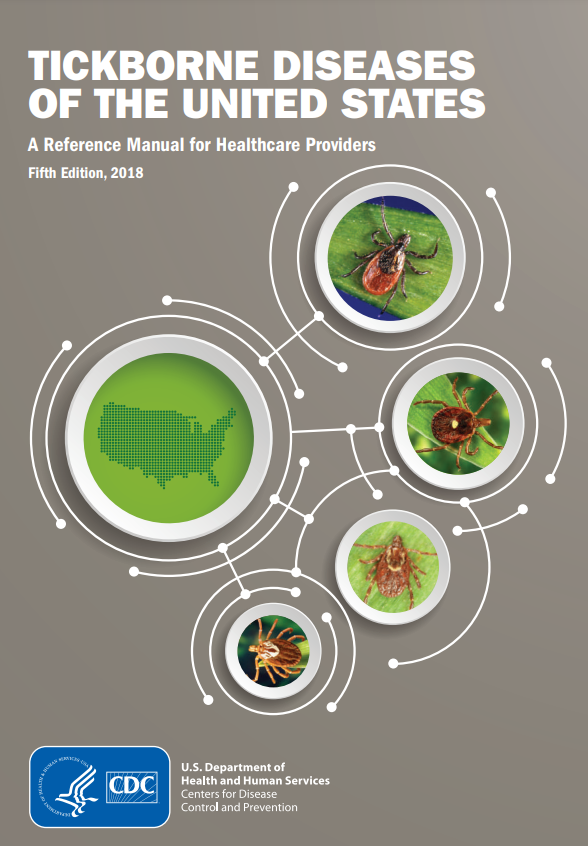DHHS → MeCDC → Disease Surveillance → Epidemiology → Vectorborne Diseases → Hard Tick Relapsing Fever
Hard Tick Relapsing Fever (Borrelia miyamotoi)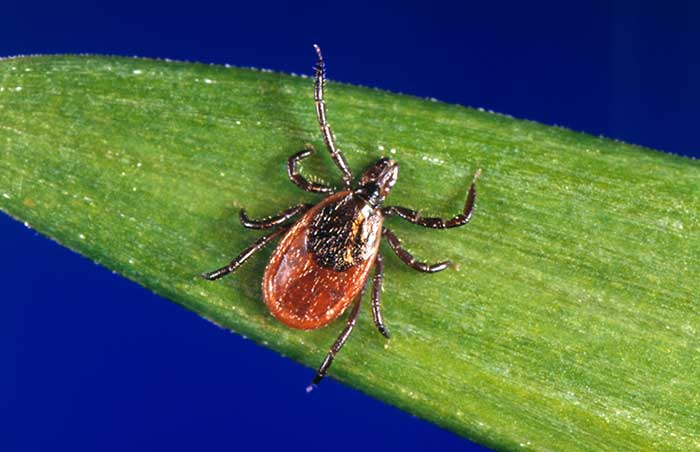
On this page:
- About Hard Tick Relapsing Fever
- Symptoms
- Prevention
- Resources for Educators
- Reports and Publications
- Resources
- Resources for Health Care Providers
Photo credit: US CDC
About Hard Tick Relapsing Fever
Hard Tick Relapsing Fever is a disease caused by the bacteria Borrelia miyamotoi. It spreads through the bite of an infected deer tick (Ixodes scapularis). This tick lives all through Maine.
Hard Tick Relapsing Fever is treatable with antibiotics. The best way to prevent getting Hard Tick Relapsing Fever is by avoiding tick bites.
Symptoms
Signs and symptoms of Hard Tick Relapsing Fever begin days to weeks after an infected tick bites. Signs and symptoms may include:

Fever and chills

Headache

Muscle or joint pain

Fatigue (feeling very tired)
Less commonly, people may have rash, abdominal or stomach pain, diarrhea, or feel dizzy or confused. Very few people experience ALL of these symptoms.
See a health care provider if you become ill after a tick bite or spending time in areas where ticks commonly live. Be sure to mention a recent tick bite or time spent in tick habitat to your health care provider.
Prevention
Prevent Tick Bites
The best way to prevent Hard Tick Relapsing Fever is to prevent tick bites in the first place. Take these simple steps every day to prevent tick bites:

Wear light-colored, long-sleeved clothing and pants. Tuck your pants into your socks.

Use an EPA-approved bug spray.

Stay in the middle of trails.

Do daily tick checks and check your pets for ticks.
Protect Your Yard From Ticks
You can make your yard a tick-safe zone:
- Keep the lawn mowed.
- Keep leaves raked and get rid of leaf piles.
- Move wood piles away from the house. Mice like to live here and can bring ticks with them.
- Move birdfeeders away from the house, gardens, and yard toys. Deer and mice like birdfeeders and can bring ticks into the yard.
- Use crushed stone or woodchips to make a tick-safe barrier around your yard. This should be 3-feet wide to separate the yard from the woods and keep ticks from crossing into the yard.

To learn more about tick bite prevention and how to keep ticks out of your yard, visit Tick Frequently Asked Questions.
Resources for Educators
Maine CDC developed vectorborne school curricula for 3rd-8th grade classrooms. The curriculum is aligned with Maine Learning Results. School nurses, teachers, and other youth leaders are encouraged to use this resource in their classrooms.
Reports and Publications
Hard Tick Relapsing Fever Surveillance Reports
Maine CDC publishes data on Hard Tick Relapsing Fever cases and rates in surveillance reports.
Tickborne Disease Data on the Maine Tracking Network
The Maine Tracking Network uses data from case reports, surveys, and tick submissions to help understand the spread of tickborne diseases in Maine. The dashboard includes real-time data, maps, charts, and graphs for anaplasmosis, babesiosis, and Lyme disease.
Resources
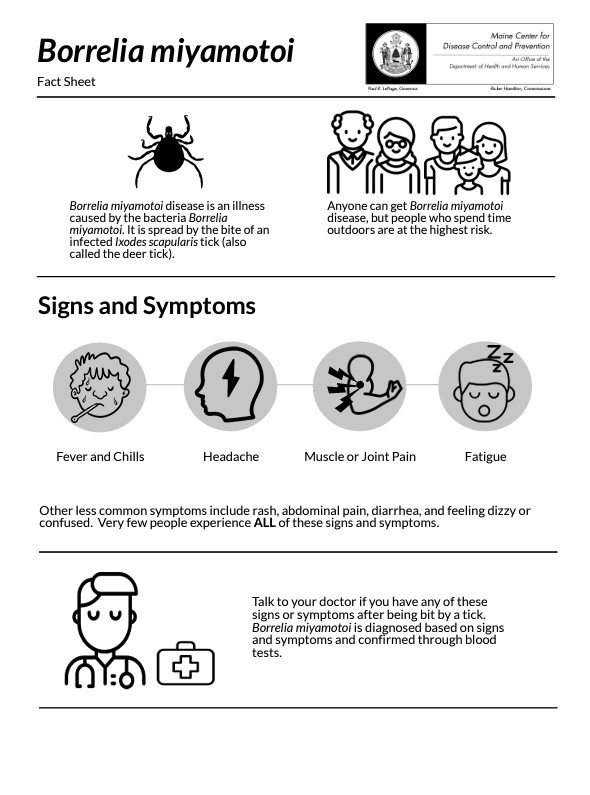
Hard Tick Relapsing Fever (Borrelia miyamotoi Disease) Factsheet (PDF) | عربي | Français (PDF) | Kreyòl Ayisyen (PDF) | Kiswahili (PDF) | Lingala (PDF) | Português (PDF) | Soomaali (PDF) | Español (PDF) | Tiếng Việt (PDF)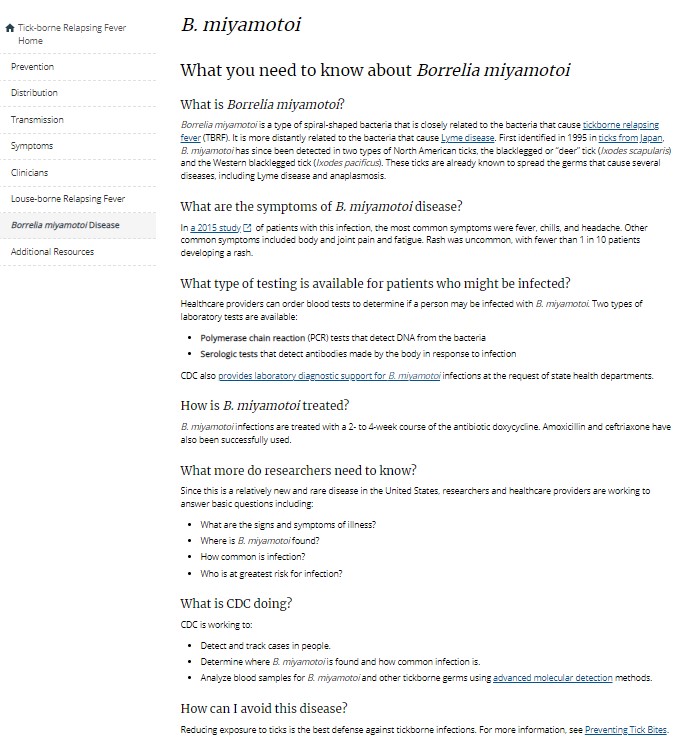
U.S. CDC Hard Tick Relapsing Fever (Borrelia miyamotoi Disease) Information
Frequently Asked Tick Questions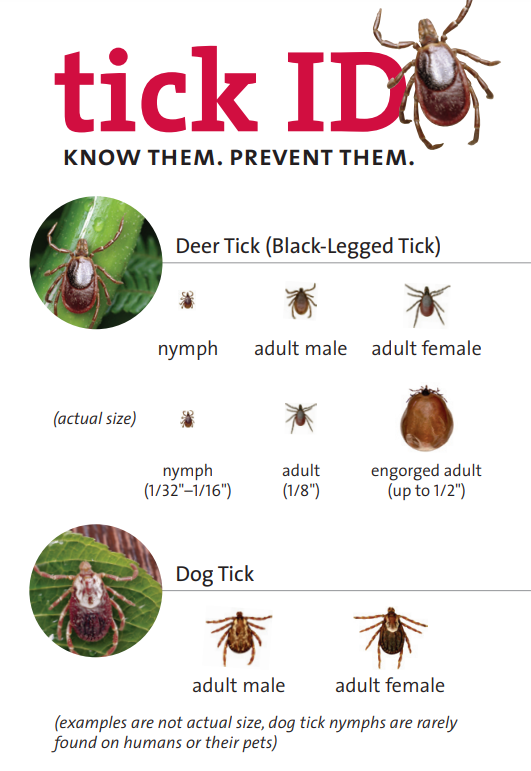
Tick Identification Information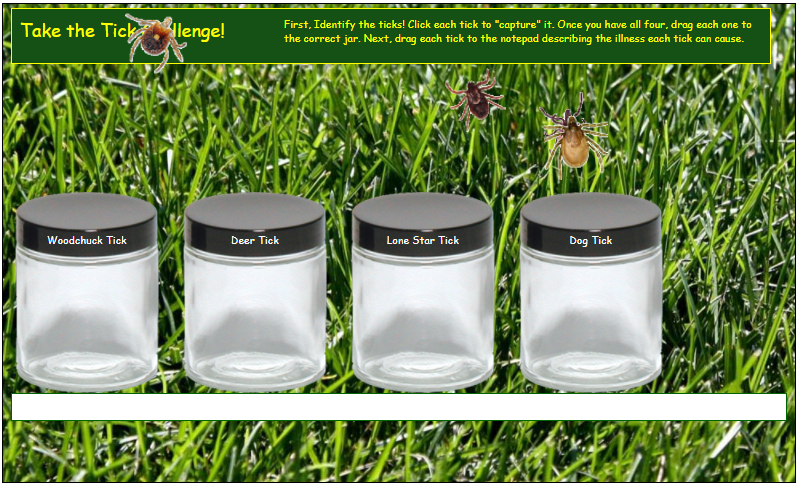
Interactive Tick Identification Game
Orderable Materials
Tickborne Disease 2024 Webinar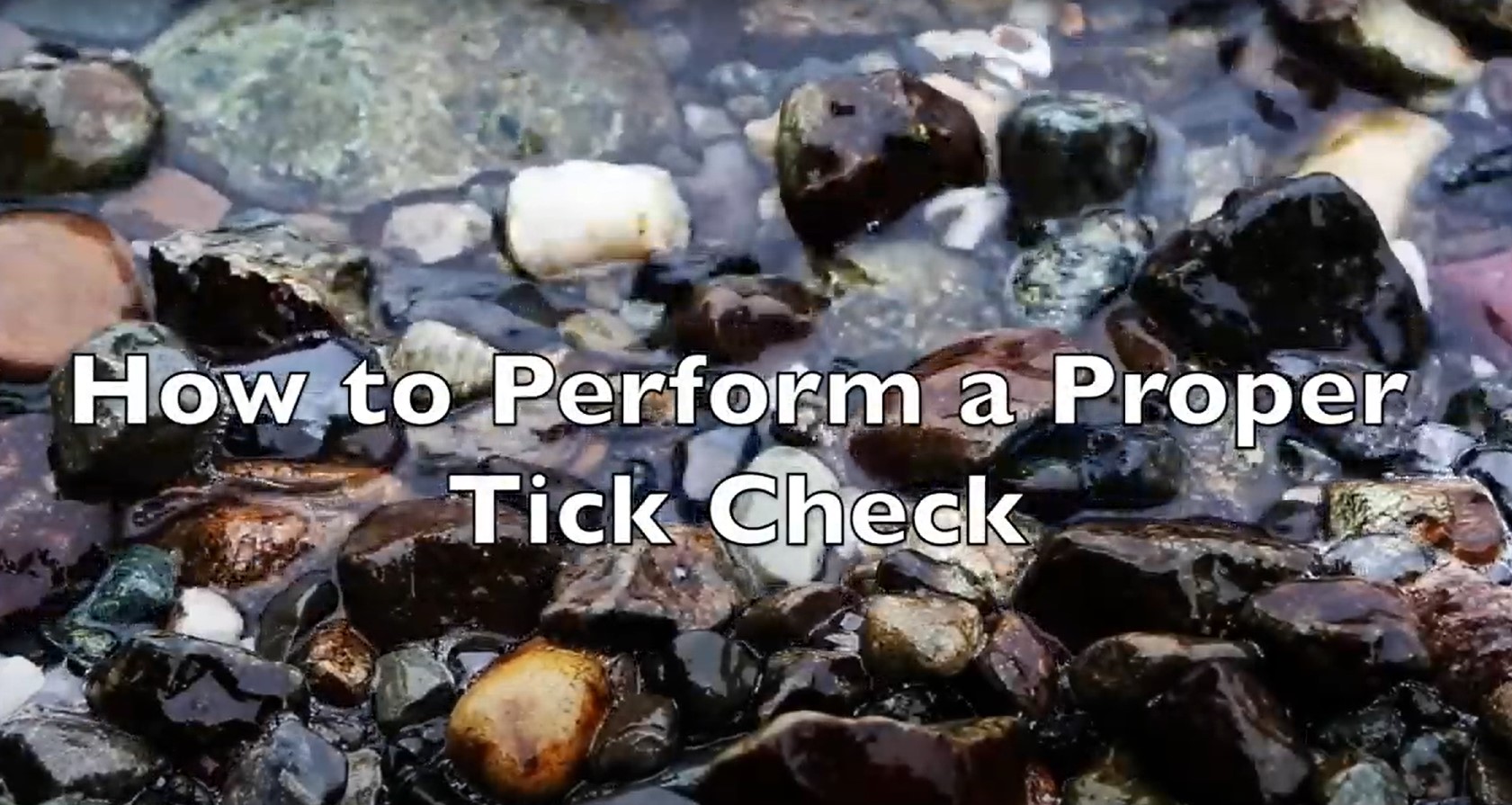
How to Perform a Tick Check Video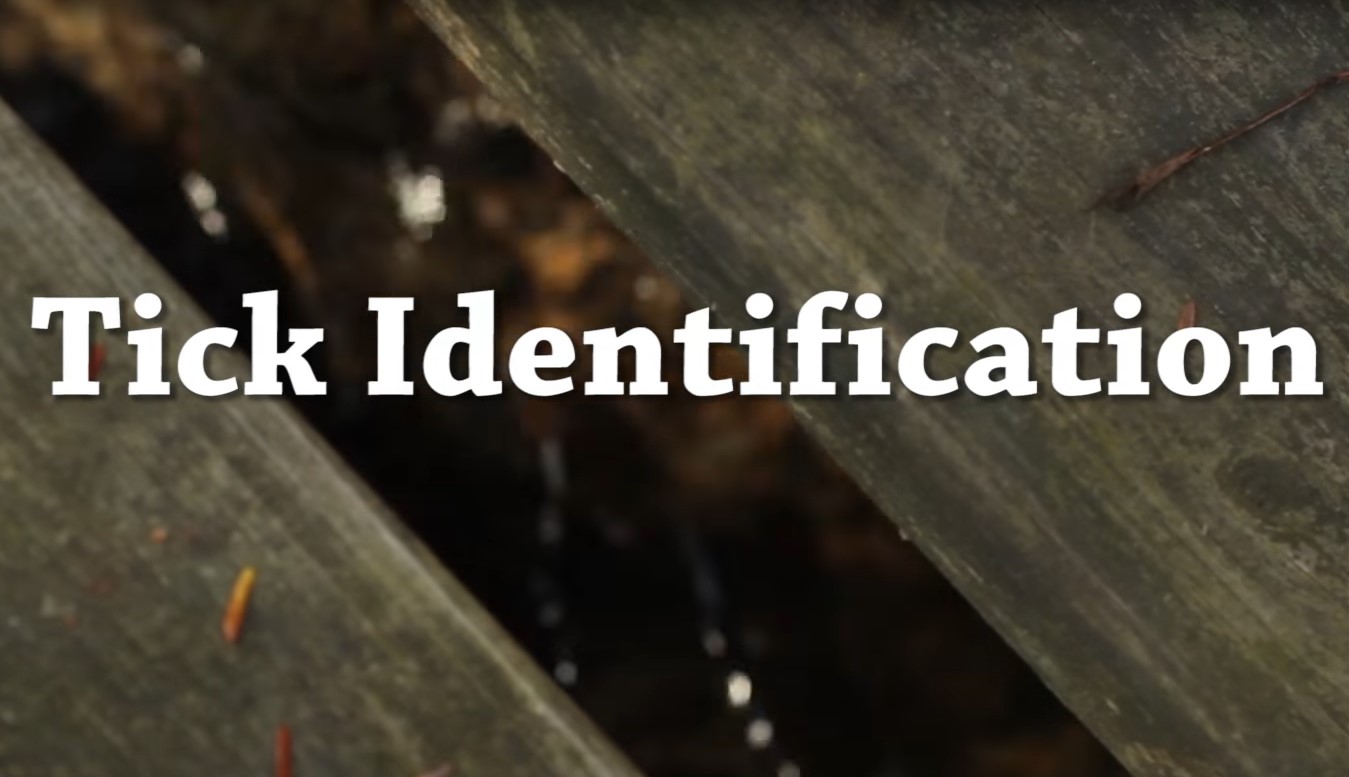
Tick Identification Video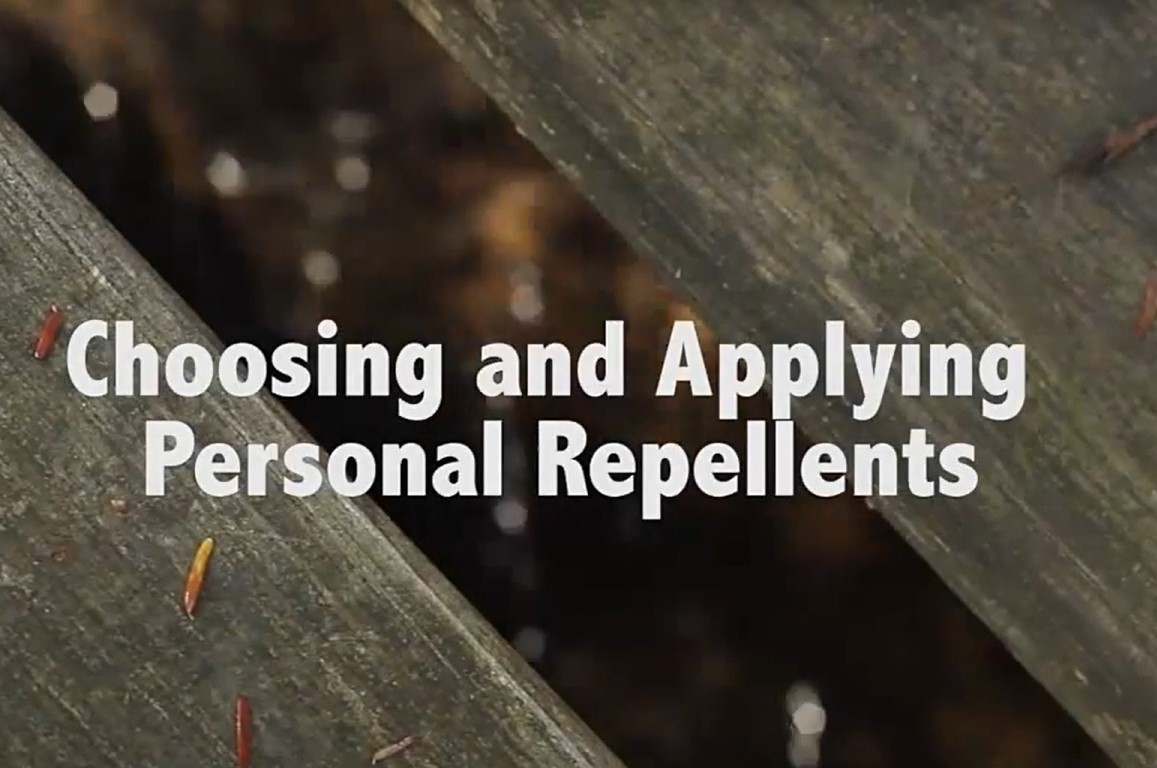
Choosing and Applying Personal Repellents Video
Reducing Tick Habitat around Your Home Video
How to Choose a Residential Pesticide Applicator Video
Resources for Health Care Providers
Icons from www.flaticon.com
